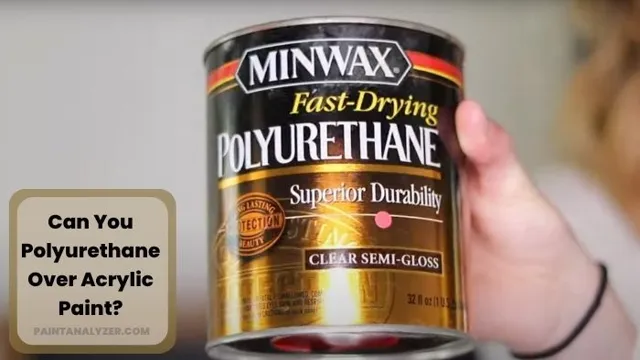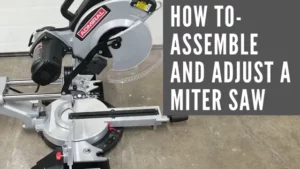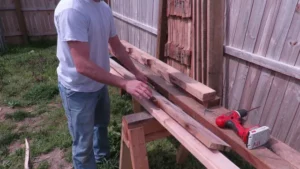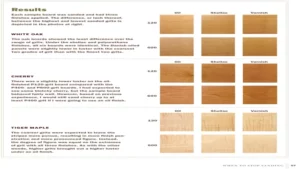Are you looking to maximize the lifespan of your pressure-treated wood? If so, polyurethane may be the answer you’ve been searching for. Pressure-treated wood is typically treated with chemicals to resist rot and decay, but exposure to the elements can still take its toll over time. Thankfully, polyurethane is a durable and long-lasting protective coating that can help extend the life of your pressure-treated wood.
Think of it like a suit of armor for your wooden structures. Polyurethane works by creating a barrier between the wood and the outside world, preventing water damage, UV damage, and other types of wear and tear. This not only keeps the wood looking great, but it also helps maintain its structural integrity.
Plus, applying polyurethane is a straightforward process that can easily be done by the average DIYer. There are a variety of different types of polyurethane coatings available, so be sure to choose the one that best suits your needs. For instance, some polyurethane coatings are better suited for horizontal surfaces like decks and patios, while others are ideal for vertical surfaces like fences and pergolas.
Additionally, there are various finishes to choose from, including matte, satin, and high-gloss. Overall, polyurethane is a highly effective way to extend the life of your pressure-treated wood. By applying a protective coating, you can rest assured that your wooden structures will stay looking great for years to come.
So why wait? Invest in some polyurethane today and reap the benefits of long-lasting, durable protection for your pressure-treated wood.
What is Polyurethane?
Yes, you can polyurethane pressure treated wood. Polyurethane is a versatile and highly durable type of coating that can protect all types of wood, including pressure-treated wood, from wear and tear caused by moisture, sunlight, and daily use. Applying a polyurethane finish to pressure treated wood can not only increase its resistance to water and other environmental factors but also enhance its natural beauty and grain.
Polyurethane comes in different forms, including oil-based and water-based, and each type has its unique benefits and drawbacks. Oil-based polyurethane dries slowly but provides a deep and rich finish that can last for years, while water-based polyurethane dries quickly and is more environmentally friendly. However, regardless of the type of polyurethane you choose, always ensure that the pressure-treated wood is entirely dry, clean, and sanded before applying the coating to achieve the best results.
Overview of Polyurethane
Polyurethane is a versatile polymer that has a wide range of uses across various industries. This polymer is composed of organic units joined together by isocyanate linkages and is known for its incredible durability, resilience, and elasticity. Polyurethane is used in the manufacture of flexible and rigid foams, adhesives, coatings, and elastomers.
It is also used in the production of synthetic leather, packaging, and insulation. Due to its excellent physical properties, polyurethane is widely used in applications that require resistance to abrasion, chemicals, and harsh weather conditions. With its varied uses and unmatched durability, polyurethane has become an indispensable component in numerous products and processes today.
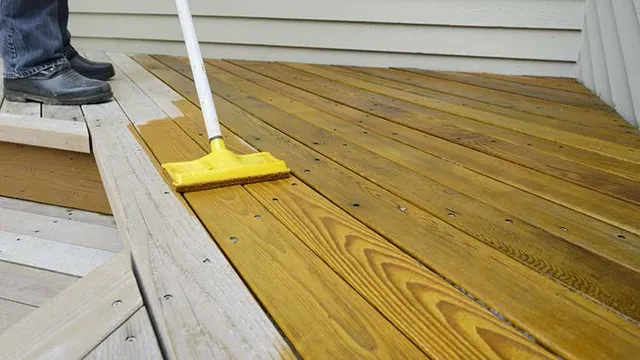
Benefits of Using Polyurethane on Pressure-Treated Wood
Yes, you can definitely use polyurethane on pressure-treated wood. The benefits of using polyurethane on pressure-treated wood are numerous. Pressure-treated wood has been treated with chemicals to resist decay, rot, insects, and moisture.
However, a layer of polyurethane can provide an additional protective coating to help preserve the wood further. Polyurethane can also enhance the wood’s natural color and beauty, making it look more attractive. Moreover, polyurethane is an excellent barrier to protect pressure-treated wood against harsh weather elements such as UV rays, rain, and wind.
It leaves a smooth, glossy finish that is easy to clean and maintain. Additionally, it’s highly durable, which means that it can withstand heavy traffic and extreme weather conditions. So, if you want to extend the life of your pressure-treated wood, using polyurethane is an excellent choice.
Protection from Moisture and Sunlight
Polyurethane If you want to ensure that your pressure-treated wood stays in great condition for years to come, then applying a coat of polyurethane is one of the best things you can do. Not only will this sealant protect your wood from moisture and sunlight, but it will also help to prevent warping and cracking over time. Polyurethane is a great choice for outdoor furniture or decking, as it is highly resistant to water damage and can withstand the harsh UV rays of the sun.
Additionally, this protective coating can be customized to create a glossy or matte finish, depending on your aesthetic preferences. Whether you’re looking to preserve the natural beauty of your wood or enhance it with a pop of color, polyurethane is an excellent choice. So why not give your pressure-treated wood the protection it deserves with a coat of reliable polyurethane sealant?
Increased Durability and Longevity
Polyurethane on Pressure-Treated Wood Using pressure-treated wood for outdoor construction certainly improves its overall longevity, but it can still be susceptible to weathering and damage over time. Enter polyurethane, a versatile and durable sealant that can add another layer of protection to pressure-treated wood. By applying polyurethane to the wood surface, you can increase its resistance to moisture, UV rays, and wear and tear from regular usage.
This can prolong the life of your outdoor structures and furniture while reducing the need for frequent repairs or replacements. Plus, polyurethane is available in different finishes like glossy, satin, or matte, so you can choose the appearance that best suits your aesthetic preferences. Overall, adding polyurethane to your pressure-treated wood can be a smart investment in both its durability and its visual appeal.
How to Apply Polyurethane to Pressure-Treated Wood
If you’re wondering if you can apply polyurethane to pressure-treated wood, the answer is yes! Polyurethane is an excellent choice for protecting pressure-treated wood from weathering and wear over time. Before you start, make sure the wood is completely dry, as any moisture in the wood can affect how well the polyurethane adheres to the surface. Also, sand the wood to remove any rough or uneven spots and ensure the polyurethane can be applied evenly.
You can apply polyurethane using a brush, roller, or spray gun, depending on your preference and the size of the project. It’s essential to apply multiple thin coats, allowing each coat to dry completely before adding the next. This will help ensure a smooth and even finish.
Give the final coat ample time to dry before using or exposing the wood to any moisture. Overall, applying polyurethane to pressure-treated wood is a straightforward and effective way to protect and prolong the life of your outdoor projects.
Step-by-Step Process
If you want your pressure-treated wood to last for years and retain its beautiful appearance, you should apply polyurethane coating on it. The process is straightforward, and you can do it on your own. Here is a step-by-step guide on how to apply polyurethane to pressure-treated wood: Step 1: Preparation Before applying polyurethane, ensure that the wood is clean, dry, and free from any dust or debris.
Sand the wood using fine-grit sandpaper to remove any rough patches. Step 2: Apply the First Coat Using a brush, apply the first coat of polyurethane evenly on the surface of the wood. Make sure you don’t leave behind any drips or runs.
Allow the coat to dry for at least 24 hours before proceeding to the next step. Step 3: Sand the First Coat Once the first coat has dried, sand it using fine-grit sandpaper. This helps to remove any bumps or roughness.
Step 4: Apply the Second Coat Using the same brush, apply the second coat of polyurethane evenly on the surface of the wood. Again, ensure that you don’t leave behind any drips or runs. Allow the coat to dry for another 24 hours.
Step 5: Final Sanding and Inspection Once the second coat has dried, sand it one final time using fine-grit sandpaper. Inspect the wood surface for any imperfections or rough patches. Step 6: Enjoy Your Beautiful Wood! Your pressure-treated wood is now ready to use and enjoy.
Remember to reapply the polyurethane at least every three years to keep your wood looking great. In conclusion, applying polyurethane to pressure-treated wood is a simple process that will protect the surface and allow it to last for years. Take your time and follow these steps, and you’ll be enjoying your wooden surfaces for a long time to come.
Choosing the Right Polyurethane for Your Project
When it comes to choosing the right polyurethane for your project, it can be confusing to know where to start. One common question is whether or not you can use polyurethane on pressure treated wood. The answer is yes! In fact, polyurethane is a great choice for protecting and preserving pressure treated wood.
However, it’s important to choose the right type of polyurethane for the job. Oil-based polyurethane is a popular choice because it can penetrate deep into the wood and provide long-lasting protection. Water-based polyurethane is also an option as it dries quickly and has low VOCs.
Ultimately, the choice comes down to personal preference and the needs of your project. So go ahead and give your pressure treated wood some much-needed protection with a high-quality polyurethane.
Types of Polyurethane
When it comes to selecting the right polyurethane for your project, it’s essential to understand the different types available. There are two primary types of polyurethane: oil-based and water-based. Oil-based polyurethane is the more traditional and durable of the two.
It can withstand heavy use and is perfect for high-traffic areas like flooring. However, it emits a strong odor and takes longer to dry. Water-based polyurethane is an eco-friendly alternative that dries much quicker than its counterpart.
It’s perfect for projects that require a fast turnaround time and produces less odor. However, it’s not as durable as oil-based polyurethane and cannot handle as much foot traffic. Ultimately, the type of polyurethane you choose will depend on the project’s needs, location, and intended use.
Factors to Consider When Choosing
When it comes to choosing the right polyurethane for your project, there are several factors to consider. Firstly, you need to think about the environment in which the polyurethane will be used. Will it be exposed to UV rays, extreme temperatures or harsh chemicals? Different polyurethane formulas have different abilities to resist these factors.
Another factor to consider is the level of flexibility required for your project. If your project involves a material that needs to bend or flex, then a more flexible polyurethane may be required. Additionally, the level of abrasion resistance needed for your project is another important factor.
Finally, you need to consider the cost and availability of the polyurethane materials. By taking all of these factors into account, you will be able to select the right polyurethane that will provide the ideal level of durability and performance for your project.
Conclusion
In conclusion, yes you can polyurethane pressure treated wood! It’s like adding a protective shield on top of an already fortified fortress. Not only does it enhance the look, but it also adds more durability and resistance to the outdoor elements. So go ahead and add that extra layer of protection to your pressure treated wood, you won’t regret it!”
FAQs
What is polyurethane?
Polyurethane is a synthetic resin commonly used as a protective coating for wood surfaces.
Can you apply polyurethane on pressure treated wood?
Yes, you can apply polyurethane on pressure treated wood after it has fully dried and cured.
Is it necessary to apply polyurethane on pressure treated wood?
It is not necessary to apply polyurethane on pressure treated wood, but it can help protect it from weathering and prolong its lifespan.
How many coats of polyurethane should be applied on pressure treated wood?
Typically, two to three coats of polyurethane should be applied on pressure treated wood for proper protection and durability.
Can you paint over polyurethane on pressure treated wood?
It is possible to paint over polyurethane on pressure treated wood, but it may require additional preparation such as sanding or priming.
How long does polyurethane last on pressure treated wood?
Polyurethane can last for several years on pressure treated wood, depending on the level of exposure to weathering and UV rays.
What are some alternatives to polyurethane for protecting pressure treated wood?
Some alternative options include oil-based sealers, clear water-repellent preservatives, or natural oils such as linseed or tung oil.
